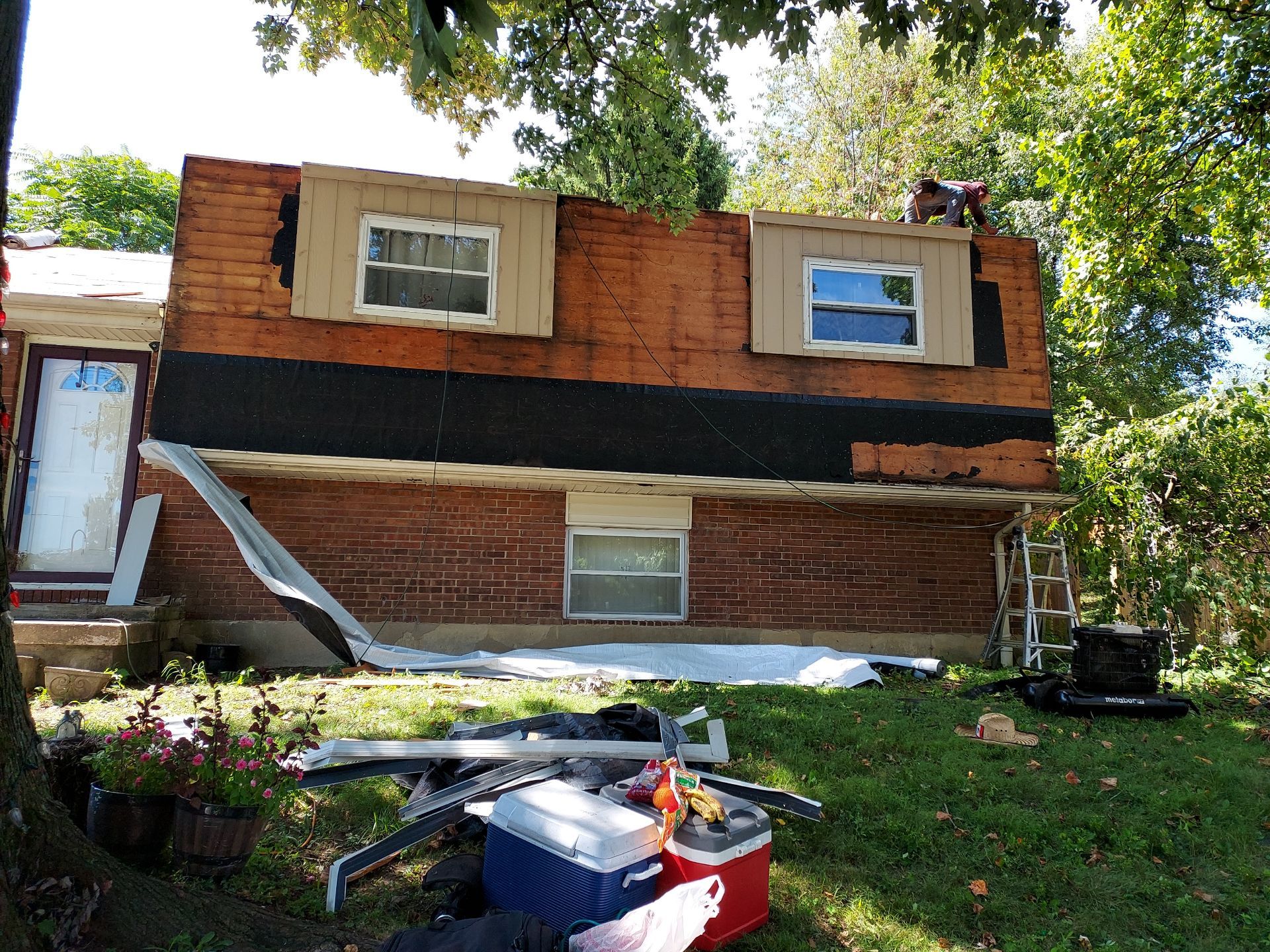How to Spot Roof Damage After a Storm
Storms can wreak havoc on your home, especially your roof, which bears the brunt of strong winds, heavy rain, hail, and debris. Spotting roof damage after a storm is essential to protecting your home from further harm and preventing costly repairs. In this article, we’ll guide you through how to identify roof damage, when to inspect your roof, and what to do if you find issues.
Why Post-Storm Roof Inspections Are Important
Roof damage can go unnoticed until it leads to serious problems like leaks, mold, or structural damage. Conducting a thorough roof inspection after a storm can help you:
- Prevent further damage from worsening issues.
- Document damage for insurance claims.
- Protect the structural integrity of your home.
- Save money by addressing problems early.
Inspect from the Ground First
Before climbing onto your roof, take a walk around your home and inspect your roof from the ground. This is the safest way to identify obvious signs of damage.
Look for:
- Missing or Displaced Shingles: Gaps, missing shingles, or shingles scattered on the ground indicate damage.
- Dents or Cracks: Hailstorms can leave dents in shingles, flashing, or gutters. Cracked shingles reduce the roof’s protective abilities.
- Granule Loss: Check your gutters and downspouts for granules. Excess granule loss could mean your shingles are nearing the end of their lifespan.
- Sagging Areas: A sagging roofline may indicate structural damage.
Pro Tip: Use binoculars to get a closer look without risking injury.
Check for Signs of Interior Damage
Even if you can’t see obvious roof damage from the outside, problems may be visible inside your home. Look for:
- Water Stains: Brown or yellow stains on your ceiling or walls indicate a potential roof leak.
- Peeling Paint or Wallpaper: Excess moisture can cause interior finishes to warp or peel.
- Dripping Water: Any active leaks after a storm are a clear sign that your roof has been compromised.
- Mold or Mildew: A musty smell or visible mold could be a sign of prolonged water intrusion.
Examine the Roof Up Close (If Safe)
If you feel confident and the roof is accessible, carefully inspect it up close. Use a sturdy ladder, wear non-slip shoes, and avoid stepping on damaged areas.
Things to look for:
- Shingle Damage: Look for curling, cracking, or torn shingles. Wind and hail often cause these issues.
- Flashing Issues: Check around chimneys, vents, and skylights for bent, loose, or missing flashing.
- Roof Vents: Ensure vents are secure and free of dents or damage.
- Debris: Fallen branches or other debris can cause punctures or scrapes. Remove them carefully to inspect underneath.
Safety Note: Avoid climbing on the roof if it is wet, icy, or visibly unstable. Hire a professional for a closer inspection.
Look for Gutter and Downspout Damage
Your roof’s drainage system often shows early signs of storm damage. Examine your gutters and downspouts for:
- Dents or Bends: Hail can dent gutters, reducing their effectiveness.
- Clogs from Debris: Leaves, branches, or roof granules may obstruct water flow, causing backups.
- Detached Gutters: High winds can pull gutters away from your roofline.
- Granule Buildup: Excess shingle granules in the gutters indicate that shingles are deteriorating.
Regularly maintaining your gutters can prevent water damage from worsening after a storm.
Check for Signs of Wind Damage
High winds are one of the most common culprits of roof damage during storms. Indicators of wind damage include:
- Lifted Shingles: Wind can loosen shingles, creating gaps for water to seep in.
- Loose Flashing: Inspect roof edges, valleys, and joints for flashing that may have been torn or displaced.
- Exposed Underlayment: If shingles are missing, the underlayment below may be exposed to the elements.
Wind damage often compromises the roof’s ability to repel water, so addressing it quickly is crucial.
Inspect for Hail Damage
Hailstorms are notorious for causing significant roof damage. Even small hailstones can affect your roof’s lifespan.
Signs of hail damage:
- Dimpled Shingles: Check for circular dents on shingles, which can weaken their integrity.
- Cracked Shingles: Hail can cause fractures that may lead to leaks over time.
- Damaged Roof Accessories: Skylights, vents, and chimneys often bear the brunt of hail impacts. Look for cracks or dents in these areas.
Pro Tip: Document hail damage with photos for your insurance claim.
Look Around Your Yard for Clues
Sometimes, the damage to your roof isn’t immediately visible, but your yard can provide important clues. Look for:
- Broken Branches or Debris: Large branches in your yard could have hit your roof, causing punctures or scrapes.
- Shingle Pieces: Torn or broken shingles scattered around your yard indicate roof damage.
- Damaged Outdoor Furniture: If furniture or fencing is damaged, your roof may have experienced similar impacts.
These signs can help you pinpoint potential problem areas to inspect further.
When to Call a Professional
While some roof damage is easy to spot, other issues may be hidden or require a trained eye. Call a professional roofing contractor if:
- You suspect structural damage.
- Your roof is steep or difficult to access.
- There’s significant moss, algae, or debris to remove before inspecting.
- You’re unsure about the extent of damage or how to fix it.
Professionals have the expertise and equipment to assess your roof safely and provide accurate recommendations for repairs.
Document Damage for Insurance Claims
If your roof sustained damage during a storm, documenting it thoroughly can simplify the insurance claim process. Follow these steps:
- Take Photos: Capture images of all visible damage, including shingles, gutters, and interior leaks.
- Keep Records: Save receipts for emergency repairs, like tarps or temporary fixes.
- File Promptly: Contact your insurance company as soon as possible to begin the claim process.
Pro Tip: Some roofing contractors can assist with insurance claims by providing detailed reports and estimates.
Prevent Future Roof Damage
Once repairs are complete, take steps to protect your roof from future storms:
- Trim Nearby Trees: Remove overhanging branches that could fall during storms.
- Clean Gutters Regularly: Keep water flowing properly to avoid pooling on your roof.
- Schedule Annual Inspections: Preventative maintenance can identify and address issues before they worsen.
- Install Impact-Resistant Shingles: These are designed to withstand hail and heavy winds, providing added durability.
Proactively maintaining your roof can save you from costly repairs and extend its lifespan.
Conclusion
Spotting roof damage after a storm is crucial to protecting your home and preventing further issues. By inspecting your roof, gutters, and surrounding areas for signs of damage, you can address problems quickly and effectively. If you’re unsure about the condition of your roof or need professional help, don’t hesitate to contact a trusted roofing contractor.
A little vigilance after every storm goes a long way in maintaining your roof’s health and keeping your home safe.







